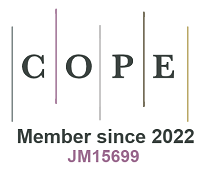REFERENCES
1. Truong-Phuoc, L.; Essyed, A.; Pham, X.; et al. Catalytic methane decomposition process on carbon-based catalyst under contactless induction heating. Chem. Synth. 2024, 4, 56.
2. Fan, M.; Guo, J.; Fang, G.; et al. Microwave-pulse assisted synthesis of tunable ternary-doped 2D molybdenum carbide for efficient hydrogen evolution. Chem. Synth. 2024, 4, 36.
3. Sun, Z.; Zhao, H.; Yu, X.; Hu, J.; Chen, Z. Glucose photorefinery for sustainable hydrogen and value-added chemicals coproduction. Chem. Synth. 2024, 4, 4.
4. Graham, T. W.; Tsang, C. W.; Chen, X.; et al. Catalytic solvolysis of ammonia borane. Angew. Chem. Int. Ed. Engl. 2010, 49, 8708-11.
5. Cao, C. Y.; Chen, C. Q.; Li, W.; Song, W. G.; Cai, W. Nanoporous nickel spheres as highly active catalyst for hydrogen generation from ammonia borane. ChemSusChem 2010, 3, 1241-4.
6. Kong, J.; Li, R.; Liu, Y.; Xu, L.; Ye, M.; Wan, C. Research progress of hydrogen production from hydrous hydrazine decomposition catalyzed by metal catalysts. Chin. J. Rare. Metals. 2024, 48, 1177-90.
7. Akbayrak, S.; Tonbul, Y.; Özkar, S. Tungsten(VI) oxide supported rhodium nanoparticles: highly active catalysts in hydrogen generation from ammonia borane. Int. J. Hydrog. Energy. 2021, 46, 14259-69.
8. Wan, C.; Li, G.; Wang, J.; et al. Modulating electronic metal-support interactions to boost visible-light-driven hydrolysis of ammonia borane: nickel-platinum nanoparticles supported on phosphorus-doped titania. Angew. Chem. Int. Ed. Engl. 2023, 62, e202305371.
9. Zheng, J.; Liang, Y.; Li, G.; et al. Mn-modified graphitic carbon nitride-supported bimetallic PtNi nanoparticles for hydrogen generation from hydrous hydrazine. ChemistrySelect 2022, 7, e202202690.
10. Wen, M.; Wu, Q.; Peng, J.; Wu, Q.; Wang, C. Fabrication of Pt-loaded NiCo nanochains with superior catalytic dehydrogenation activity. J. Colloid. Interface. Sci. 2014, 416, 220-6.
11. Zhang, H.; Gu, X.; Liu, P.; Song, J.; Cheng, J.; Su, H. Highly efficient visible-light-driven catalytic hydrogen evolution from ammonia borane using non-precious metal nanoparticles supported by graphitic carbon nitride. J. Mater. Chem. A. 2017, 5, 2288-96.
12. Zhuo, Q.; Zhang, Y.; Du, Q.; Yan, C. Facile reduction of graphene oxide at room temperature by ammonia borane via salting out effect. J. Colloid. Interface. Sci. 2015, 457, 243-7.
13. Langmi, H. W.; Mcgrady, G. S. Non-hydride systems of the main group elements as hydrogen storage materials. Coord. Chem. Rev. 2007, 251, 925-35.
14. Wang, X.; Liao, J.; Li, H.; Wang, H.; Wang, R. Solid-state-reaction synthesis of cotton-like CoB alloy at room temperature as a catalyst for hydrogen generation. J. Colloid. Interface. Sci. 2016, 475, 149-53.
15. Wan, C.; Liu, X.; Wang, J.; Chen, F.; Cheng, D. Heterostructuring 2D Co2P nanosheets with 0D CoP via a salt-assisted strategy for boosting hydrogen evolution from ammonia borane hydrolysis. Nano. Res. 2023, 16, 6260-9.
16. Wan, C.; Liang, Y.; Zhou, L.; et al. Integration of morphology and electronic structure modulation on cobalt phosphide nanosheets to boost photocatalytic hydrogen evolution from ammonia borane hydrolysis. Green. Energy. Environ. 2024, 9, 333-43.
17. Li, G.; Li, R.; Liu, Y.; Xu, L.; Ye, M.; Wan, C. Preparation of Rh/N-SBC nanocatalyst and its catalytic performance for hydrolytic dehydrogenation of ammonia borane. Chin. J. Rare. Metals. 2024, 48, 944-54.
18. Li, Z.; He, T.; Matsumura, D.; et al. Atomically dispersed Pt on the surface of Ni particles: synthesis and catalytic function in hydrogen generation from aqueous ammonia–borane. ACS. Catal. 2017, 7, 6762-9.
19. Zhang, J.; Zheng, X.; Yu, W.; Feng, X.; Qin, Y. Unravelling the synergy in platinum-nickel bimetal catalysts designed by atomic layer deposition for efficient hydrolytic dehydrogenation of ammonia borane. Appl. Catal. B. Environ. 2022, 306, 121116.
20. Zhou, S.; Yang, Y.; Yin, P.; Ren, Z.; Wang, L.; Wei, M. Metal-support synergistic catalysis in Pt/MoO3-x nanorods toward ammonia borane hydrolysis with efficient hydrogen generation. ACS. Appl. Mater. Interfaces. 2022, 14, 5275-86.
21. Huang, X.; Liu, Y.; Wen, H.; et al. Ensemble-boosting effect of Ru-Cu alloy on catalytic activity towards hydrogen evolution in ammonia borane hydrolysis. Appl. Catal. B. Environ. 2021, 287, 119960.
22. Feng, Y.; Zhou, X.; Yang, J.; et al. Encapsulation of ammonia borane in Pd/halloysite nanotubes for efficient thermal dehydrogenation. ACS. Sustain. Chem. Eng. 2020, 8, 2122-9.
23. Wan, C.; Zhou, L.; Xu, S.; et al. Defect engineered mesoporous graphitic carbon nitride modified with AgPd nanoparticles for enhanced photocatalytic hydrogen evolution from formic acid. Chem. Eng. J. 2022, 429, 132388.
24. Wan, C.; Zhou, L.; Sun, L.; et al. Boosting visible-light-driven hydrogen evolution from formic acid over AgPd/2D g-C3N4 nanosheets Mott-Schottky photocatalyst. Chem. Eng. J. 2020, 396, 125229.
25. Duan, H.; Hao, Q.; Xu, C. Nanoporous PtFe alloys as highly active and durable electrocatalysts for oxygen reduction reaction. J. Power. Sources. 2014, 269, 589-96.
26. Dai, H.; Gao, L.; Liang, Y.; Kang, X.; Wang, P. Promoted hydrogen generation from ammonia borane aqueous solution using cobalt–molybdenum–boron/nickel foam catalyst. J. Power. Sources. 2010, 195, 307-12.
27. Wan, C.; Li, R.; Wang, J.; et al. Silica confinement for stable and magnetic Co-Cu alloy nanoparticles in nitrogen-doped carbon for enhanced hydrogen evolution. Angew. Chem. Int. Ed. Engl. 2024, 63, e202404505.
28. Li, M.; Hu, J.; Chen, Z.; Lu, H. A high-performance Pt–Co bimetallic catalyst with polyethyleneimine decorated graphene oxide as support for hydrolysis of ammonia borane. RSC. Adv. 2014, 4, 41152-8.
29. Wang, S.; Zhang, D.; Ma, Y.; et al. Aqueous solution synthesis of Pt-M (M = Fe, Co, Ni) bimetallic nanoparticles and their catalysis for the hydrolytic dehydrogenation of ammonia borane. ACS. Appl. Mater. Interfaces. 2014, 6, 12429-35.
30. Mori, K.; Miyawaki, K.; Yamashita, H. Ru and Ru–Ni nanoparticles on TiO2 support as extremely active catalysts for hydrogen production from ammonia–borane. ACS. Catal. 2016, 6, 3128-35.
31. Singh, A. K.; Xu, Q. Synergistic catalysis over bimetallic alloy nanoparticles. ChemCatChem 2013, 5, 652-76.
32. Ge, Y.; Qin, X.; Li, A.; et al. Maximizing the synergistic effect of CoNi catalyst on α-MoC for robust hydrogen production. J. Am. Chem. Soc. 2021, 143, 628-33.
33. Poon, P.; Wang, Y.; Li, W.; et al. Synergistic effect of Co catalysts with atomically dispersed CoNx active sites on ammonia borane hydrolysis for hydrogen generation. J. Mater. Chem. A. 2022, 10, 5580-92.
34. Dong, C.; Gao, Z.; Li, Y.; et al. Fully exposed palladium cluster catalysts enable hydrogen production from nitrogen heterocycles. Nat. Catal. 2022, 5, 485-93.
35. Jeong, H.; Kwon, O.; Kim, B.; et al. Highly durable metal ensemble catalysts with full dispersion for automotive applications beyond single-atom catalysts. Nat. Catal. 2020, 3, 368-75.
36. Yang, J.; Yuan, Q.; Liu, Y.; et al. Low-cost ternary Ni–Fe–P catalysts supported on Ni foam for hydrolysis of ammonia borane. Inorg. Chem. Front. 2019, 6, 1189-94.
37. Wan, C.; Sun, L.; Xu, L.; et al. Novel NiPt alloy nanoparticle decorated 2D layered g-C3N4 nanosheets: a highly efficient catalyst for hydrogen generation from hydrous hydrazine. J. Mater. Chem. A. 2019, 7, 8798-804.
38. Ren, W.; Liu, S.; Wang, Y.; et al. Sea urchin-like NiPt/TiCeO2 catalyst for rapid and efficient hydrogen production from hydrous hydrazine. J. Rare. Earths.2025, In Press.
39. Zhang, M.; Liu, L.; Lu, S.; Xu, L.; An, Y.; Wan, C. Facile fabrication of NiPt/CNTs as an efficient catalyst for hydrogen production from hydrous hydrazine. ChemistrySelect 2019, 4, 10494-500.
40. Tomishige, K.; Kanazawa, S.; Ito, S.; Kunimori, K. Catalyst development for direct heat supply from combustion to reforming in methane reforming with CO2 and O2. Appl. Catal. A. Gen. 2003, 244, 71-82.
41. Tomishige, K.; Kanazawa, S.; Sato, M.; Ikushima, K.; Kunimori, K. Catalyst design of Pt-modified Ni/Al2O3 catalyst with flat temperature profile in methane reforming with CO2 and O2. Catal. Lett. 2002, 84, 69-74.
42. Du, Y.; Wang, B.; Kang, K.; et al. Signal synergistic amplification strategy based on functionalized CeMOFs for highly sensitive electrochemical detection of phenolic isomers. Microchem. J. 2022, 177, 107285.
43. Chen, X.; Lin, Y.; Li, W.; et al. Amidoximated CeMOFs superstructures with algae-removing properties for efficient uranium extraction from simulated seawater. Sustain. Mater. Technol. 2022, 34, e00521.
44. Li, Z.; Ma, C.; Qi, M.; et al. CeO2 from pyrolysis of MOFs for efficient catalytic combustion of VOCs. Mol. Catal. 2023, 535, 112857.








